
Anjar: The Hidden Gem of Lebanon
Discover the ancient ruins and rich cultural heritage of Anjar, Lebanon's hidden gem in the scenic Bekaa Valley.
Nestled in the Bekaa Valley, Anjar is a small town with a rich history that dates back to the 8th century. This UNESCO World Heritage site is known for its unique Umayyad architecture, which offers a glimpse into the early Islamic period. The ruins of Anjar, also known as Gerrha, are a testament to the town's past as a bustling trade center and a melting pot of cultures. Visitors to Anjar can explore the remnants of its grand palaces, mosques, and public baths. The town is laid out in a grid system, showcasing the advanced urban planning of the Umayyad dynasty. Walking through the ancient streets, you will feel as though you have been transported back in time. The surrounding landscape, with its lush greenery and mountain views, adds to the town's charm and makes it a perfect destination for history enthusiasts and nature lovers alike. Anjar is not just about historical ruins; it also offers a taste of Lebanese culture and cuisine. The town's vibrant markets and local eateries provide an opportunity to indulge in traditional dishes and buy handmade crafts. Whether you are a history buff, a foodie, or simply looking for a peaceful retreat, Anjar has something to offer for everyone.
Local tips in Anjar
- Visit early in the morning to avoid crowds and enjoy the ruins in peace.
- Wear comfortable shoes as the terrain can be uneven and requires a fair amount of walking.
- Bring a hat and sunscreen, especially during the summer months, as there is limited shade.
- Try the local cuisine at nearby restaurants; don't miss out on traditional Lebanese dishes like kibbeh and tabbouleh.
- Hire a local guide to get a deeper understanding of the historical significance and architectural details of the ruins.
Anjar: The Hidden Gem of Lebanon
Nestled in the Bekaa Valley, Anjar is a small town with a rich history that dates back to the 8th century. This UNESCO World Heritage site is known for its unique Umayyad architecture, which offers a glimpse into the early Islamic period. The ruins of Anjar, also known as Gerrha, are a testament to the town's past as a bustling trade center and a melting pot of cultures. Visitors to Anjar can explore the remnants of its grand palaces, mosques, and public baths. The town is laid out in a grid system, showcasing the advanced urban planning of the Umayyad dynasty. Walking through the ancient streets, you will feel as though you have been transported back in time. The surrounding landscape, with its lush greenery and mountain views, adds to the town's charm and makes it a perfect destination for history enthusiasts and nature lovers alike. Anjar is not just about historical ruins; it also offers a taste of Lebanese culture and cuisine. The town's vibrant markets and local eateries provide an opportunity to indulge in traditional dishes and buy handmade crafts. Whether you are a history buff, a foodie, or simply looking for a peaceful retreat, Anjar has something to offer for everyone.
When is the best time to go to Anjar?
Iconic landmarks you can’t miss
Umayyad City Ruins
Explore the Umayyad City Ruins, a UNESCO World Heritage Site in Lebanon, revealing the architectural marvels of the ancient Umayyad dynasty.

Anjar Citadel
Discover the historical wonders of Anjar Citadel, a UNESCO World Heritage site in Lebanon, showcasing ancient Umayyad architecture and breathtaking landscapes.

Armenian Apostolic St. Paul Church
Experience the rich heritage and architectural beauty of the Armenian Apostolic St. Paul Church in Aanjar, a spiritual haven for travelers.

Mousa ler Ainjar Ethnographical Museum
Explore the Mousa ler Ainjar Ethnographical Museum and immerse yourself in the rich cultural heritage of Lebanon, showcasing traditional artifacts and local history.

Historical Clock of Anjar
Explore the Historical Clock of Anjar, where rich Lebanese heritage meets serene park beauty, perfect for leisurely strolls and captivating photography.

Armenian Cemetery of Anjar
Discover the poignant history and artistic beauty of the Armenian Cemetery of Anjar, a tribute to Armenian heritage in Chamsine.

Unmissable attractions to see
Zaituna Bay
Discover the charm of Zaituna Bay in Beirut, a picturesque marina with diverse dining, stunning views, and a vibrant atmosphere for an unforgettable experience.

Al Raouche Rocks
Explore the stunning Al Raouche Rocks in Beirut, a natural wonder and historical landmark that captivates visitors with its breathtaking views and rich culture.

Jeita Grotto
Discover the enchanting Jeita Grotto, a natural wonder in the Valley of the Dog River, showcasing breathtaking limestone formations and serene underground lakes.

Our Lady of Lebanon بازيليك سيدة لبنان
Discover the breathtaking Our Lady of Lebanon in Harissa, a stunning Catholic church offering panoramic views and a rich spiritual experience.

Mohammad Al Amin Mosque
Explore Mohammad Al Amin Mosque, an architectural gem in Beirut that reflects the city’s rich history and cultural diversity, a must-see for every traveler.
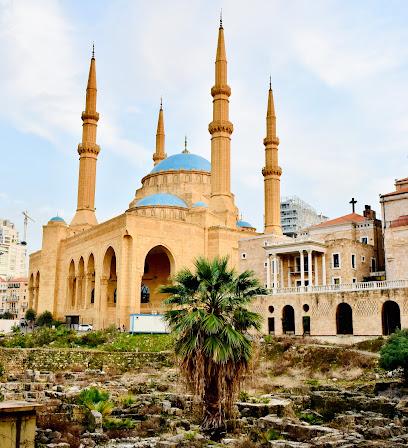
National Museum of Beirut
Explore Lebanon's rich history and archaeological treasures at the National Museum of Beirut in Mathaf, a must-visit for culture enthusiasts.

Casino du Liban
Discover the excitement of Casino du Liban, where gaming meets gourmet dining and breathtaking views in the heart of Jounieh.

Moussa Castle
Explore the enchanting Moussa Castle, a stunning architectural gem in Lebanon, offering rich history and breathtaking views of the surrounding landscapes.

Nicolas Sursock Museum
Explore contemporary Lebanese art at the Nicolas Sursock Museum in Beirut, a cultural landmark showcasing the best of modern creativity.

Sayyida Khawla Shrine
Explore the spiritual and architectural wonders of Sayyida Khawla Shrine in Baalbek, a true gem of Lebanese heritage.

Monastery Saint Maroun
Experience tranquility and spirituality at Monastery Saint Maroun in Aannaya, Lebanon, a serene retreat steeped in history and natural beauty.

Jezzine Waterfall
Experience the breathtaking beauty of Jezzine Waterfall, a tranquil oasis in Lebanon, perfect for nature lovers and adventure seekers alike.

Shouf Biosphere Reserve Barouk Cedar Forest
Discover the breathtaking landscapes and ancient cedars of the Shouf Biosphere Reserve's Barouk Cedar Forest in Lebanon's natural paradise.

Umayyad City Ruins
Explore the Umayyad City Ruins in Aanjar, Lebanon, an archaeological treasure showcasing the grandeur of the Umayyad dynasty amidst stunning landscapes.

Lady Of Zahle
Explore the stunning Lady of Zahle, a majestic church offering breathtaking views, rich history, and a serene atmosphere in Lebanon's picturesque town.

Essential places to dine
Al Shams Restaurant
Experience authentic Lebanese flavors at Al Shams Restaurant in Anjar – where every meal tells a story.

Amaleen Cafe & Restaurant
Discover authentic Lebanese flavors at Amaleen Cafe & Restaurant in Zahlé - where every meal tells a story.

Restaurant Wadi Chamsine
Discover authentic Lebanese cuisine at Restaurant Wadi Chamsine in Bar Elias - where every meal is a celebration of flavors.
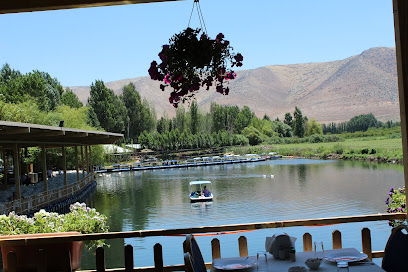
Sama Chtaura
Discover authentic Lebanese cuisine at Sama Chtaura in Bekaa Valley—where tradition meets modern elegance.

Nabaa Anjar Restaurant
Experience authentic Lebanese cuisine at Nabaa Anjar Restaurant in Bekaa Valley - a true culinary delight surrounded by stunning landscapes.
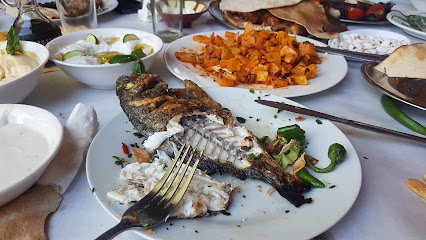
Pain Et Vin
Experience authentic Lebanese cuisine and fine wines at Pain Et Vin, a culinary treasure in Zahlé offering a blend of tradition and innovation.

Al Shams Chicken and Sandwiches Anjar
Experience authentic Lebanese cuisine at Al Shams Chicken and Sandwiches Anjar - where flavor meets tradition on Damascus Highway.

EAST RESORT (منتجع الشرق)
Experience unparalleled relaxation and luxury at East Resort in Aanjar - your ultimate destination for a tranquil getaway.

Hotel and Restaurant Shallalat Anjar -مطعم شلالات عنجر
Experience authentic Lebanese and Greek cuisine at Hotel and Restaurant Shallalat Anjar - where hospitality meets breathtaking views.

Ghzayel - Restaurant
Savor authentic Lebanese cuisine at Ghzayel Restaurant in Bar Elias – where every meal tells a story.
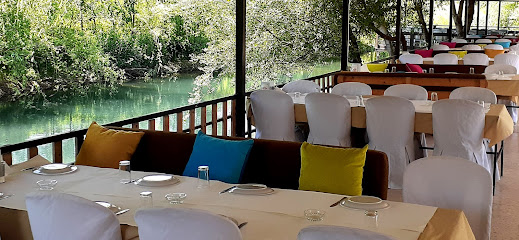
Razmig Resort and Restaurant
Experience exquisite dining at Razmig Resort and Restaurant in Aanjar, where culinary delights meet stunning natural beauty.

مطعم العندليب
Experience authentic Lebanese flavors at مطعم العندليب – where every dish tells a story of tradition and taste.

Restaurant & Cafe & Patisserie Jaber
Experience authentic Lebanese cuisine at Restaurant & Cafe & Patisserie Jaber along Chtoura-Zahlé Highway - A gastronomic delight!

Chames rest
Experience authentic Lebanese cuisine at Chames Rest in Aanjar – a culinary haven for food lovers seeking rich flavors and warm hospitality.

Hamada Restaurant
Experience the rich flavors of Lebanon at Hamada Restaurant in Majdal Aanjar – your gateway to authentic Lebanese dining.

Markets, malls and hidden boutiques
Anjar Citadel
Discover the enchanting Anjar Citadel, a UNESCO World Heritage site, where history and architecture come alive in the heart of Lebanon.

Hotel Layali Al Shams
Discover tranquility and elegance at Hotel Layali Al Shams, your perfect retreat in Anjar, Lebanon, featuring a swimming pool and exquisite dining.

Chamsine Anjar
Discover Chamsine Anjar, a bakery in Aanjar offering exquisite Lebanese pastries and baked goods, a true taste of Lebanon's culinary heritage.

Charisma Ceramic
Discover modern and unique ceramic tiles at Charisma Ceramic in Majdal Anjar, where quality meets affordability in stunning designs.

Bazar Anjar - بازار عنجر
Explore the colorful offerings of Bazar Anjar, where local fashion meets vibrant culture in a unique shopping experience.
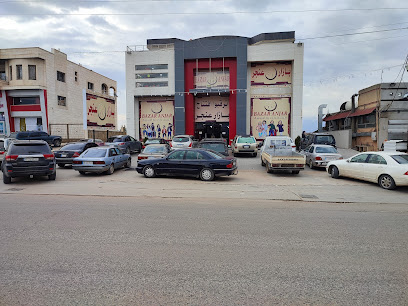
Supermarket Bedros Makhoulian
Experience the heart of Anjar at Supermarket Bedros Makhoulian, where local flavors and everyday essentials meet.

Captain's Mooneh
Explore the essence of Lebanese cuisine with organic delights at Captain's Mooneh, a must-visit food store in Beirut.

Coco Bakery
Discover the delightful flavors of Lebanon at Coco Bakery in Aanjar, a must-visit for pastry lovers and coffee enthusiasts.

Abdel Rahman Trading Company
Explore a delightful variety of toys, bicycles, and stationery at Abdel Rahman Trading Company on the Masnaa highway, a must-visit for families and enthusiasts alike.

Arous wedding dress
Discover the finest bridal gowns at Arous Wedding Dress in Aanjar, where dreams become reality for every bride-to-be.

Anjar
Discover the historical wonders of Anjar, a UNESCO World Heritage Site in Lebanon, where ancient ruins tell the stories of a remarkable past.

حسام نبعة للألبسة
Experience the best of local fashion at حسام نبعة للألبسة, where style meets tradition in Aanjar's charming clothing store.

Mousa ler Ainjar Ethnographical Museum
Explore the cultural heritage of Lebanon at Mousa ler Ainjar Ethnographical Museum, where history comes alive through engaging exhibits and local stories.

Beit al mouneh anjar
Explore Beit al Mouneh Anjar for a taste of authentic Lebanese cuisine with fresh local produce and artisanal goods in Aanjar, Lebanon.

Miss anna
Explore Miss Anna, a charming women's clothing store offering unique styles and local fashion insights in the heart of Lebanon.

Essential bars & hidden hideouts
Al Shams Restaurant
Discover the authentic flavors of Lebanon at Al Shams Restaurant in Anjar, where every dish tells a story of tradition and taste.

Nabaa Anjar Restaurant
Discover the rich flavors of Lebanese cuisine at Nabaa Anjar Restaurant, a culinary gem in the stunning Bekaa Valley.

Hotel Layali Al Shams
Discover luxury and tradition at Hotel Layali Al Shams in Anjar, Lebanon, your gateway to culture and comfort.

Brut Bar
Experience the essence of Lebanese wine culture at Brut Bar in Zahlé, where every sip is a journey through local flavors and vibrant atmosphere.

Chapter II
Experience the lively ambiance and exquisite drinks at Chapter II, Wadi El Aarayech's premier bar for a memorable night out.

Hotel and Restaurant Shallalat Anjar -مطعم شلالات عنجر
Experience authentic Lebanese and Greek cuisines at Shallalat Anjar, a serene escape in Aanjar, Lebanon.

Razmig Resort and Restaurant
Experience the vibrant flavors of Lebanon at Razmig Resort and Restaurant, a culinary gem in Aanjar offering exquisite dishes and a stunning ambiance.

Chames rest
Experience authentic Lebanese cuisine at Chames Rest in Aanjar, where warm hospitality meets delightful flavors in a charming setting.

مطعم ديوان الوالي
Experience authentic Lebanese flavors at مطعم ديوان الوالي, where every dish tells a story of culture and tradition.
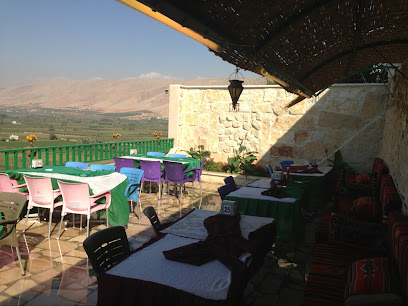
Bar Guitar
Experience the vibrant nightlife and local culture at Bar Guitar, Zahlé's beloved pub known for live music and delicious drinks.

Rayme's Pub & Pizza
Discover the charm of Ferzol at Rayme's Pub & Pizza, where delicious food and a welcoming atmosphere await every visitor.

Brothers Pub & Rest.
Experience the essence of Lebanese cuisine at Brothers Pub & Rest, a vibrant dining destination in Aanjar, perfect for travelers seeking authentic flavors.

October 17 PUB
Discover the vibrant nightlife at October 17 PUB, a lively bar in Zahlé offering a unique blend of local culture and refreshing drinks.

3al nahr عالنهر
Discover the charm of 3al nahr عالنهر, a picturesque bar by the Berdawni River, perfect for unwinding and enjoying the local vibe.

Quality pub
Discover the lively spirit of Zahlé at Quality Pub, a premier bar offering great drinks and an unforgettable atmosphere.

Local Phrases
-
- Helloمرحبا
[marhaba] - Goodbyeوداعا
[wadaan] - Yesنعم
[naam] - Noلا
[la] - Please/You're welcomeمن فضلك
[min fadlak] - Thank youشكرا
[shukran] - Excuse me/Sorryعذرا
[‘udhran] - How are you?كيف حالك؟
[kayf halak?] - Fine. And you?بخير. وأنت؟
[bikhayr. wa'ant?] - Do you speak English?هل تتكلم الإنجليزية؟
[hal tatakallam al'inglizia?] - I don't understandأنا لا أفهم
[ana la afham]
- Helloمرحبا
-
- I'd like to see the menu, pleaseأريد أن أرى القائمة، من فضلك
[uriid 'an 'ara alqa'imah, min fadlak] - I don't eat meatأنا لا آكل اللحم
[ana la aakul allahm] - Cheers!صحتين
[sahatayn] - I would like to pay, pleaseأود أن أدفع، من فضلك
[awad 'an adfa', min fadlak]
- I'd like to see the menu, pleaseأريد أن أرى القائمة، من فضلك
-
- Help!النجدة!
[alnajdah!] - Go away!اذهب بعيدا!
[idhab baeidan!] - Call the Police!اتصل بالشرطة!
[itassil bialshurta!] - Call a doctor!اتصل بطبيب!
[itassil bitabib!] - I'm lostلقد ضللت
[laqad dalalt] - I'm illأنا مريض
[ana mareed]
- Help!النجدة!
-
- I'd like to buy...أريد شراء...
[uriid shira...] - I'm just lookingأنا فقط أتطلع
[ana faqat atatallu'] - How much is it?كم سعره؟
[kam si'ruh?] - That's too expensiveهذا غالي جدا
[hatha ghaali jiddan] - Can you lower the price?هل يمكنك خفض السعر؟
[hal yumkinuk khafd alsir?]
- I'd like to buy...أريد شراء...
-
- What time is it?كم الساعة؟
[kam alsaa'ah?] - It's one o'clockالساعة الواحدة
[alssaa'ah alwaahidah] - Half past (10)الساعة العاشرة والنصف
[alssaa'ah al'ashirah walnisf] - Morningالصباح
[alssabah] - Afternoonالمساء
[almasa'] - Eveningالليل
[allayl] - Yesterdayأمس
[ams] - Todayاليوم
[alyawm] - Tomorrowغدا
[ghadan] - 1واحد
[wahid] - 2اثنان
[ithnan] - 3ثلاثة
[thalathah] - 4أربعة
[arba'ah] - 5خمسة
[khamsah] - 6ستة
[sittah] - 7سبعة
[sab'ah] - 8ثمانية
[thamania] - 9تسعة
[tis'ah] - 10عشرة
[asharah]
- What time is it?كم الساعة؟
-
- Where's a/the...?أين هو/هي...؟
[ayn hu/hyi...?] - What's the address?ما هو العنوان؟
[ma hu al'anaan?] - Can you show me (on the map)?هل يمكنك أن تريني (على الخريطة)؟
[hal yumkinuk 'an turiini (‘alaa alkhariitah)?] - When's the next (bus)?متى يأتي الحافلة القادمة؟
[matay ya'tii alhafilah alqaadimah?] - A ticket (to ....)تذكرة (إلى ...)
[tadhkirah (‘iilaa ...)]
- Where's a/the...?أين هو/هي...؟
History of Anjar
-
Anjar was founded in the early 8th century by the Umayyad Caliph Al-Walid I. The city was strategically located at the crossroads of two major trade routes, which facilitated commerce and communication throughout the region. The Umayyads envisioned Anjar as a prosperous commercial hub and a fortified stronghold.
-
Anjar is renowned for its well-preserved architectural layout. The city was built following a rectangular grid plan, reflecting the Roman-Byzantine urban design. The ruins include grand palaces, mosques, residential quarters, and public baths, all showcasing the unique fusion of Umayyad and Byzantine architectural styles.
-
One of the most impressive structures in Anjar is the Great Palace, which served as the administrative and ceremonial center of the city. The palace complex includes a large courtyard, audience halls, and private living quarters. The intricate stone carvings and mosaics provide insights into the artistic achievements of the Umayyad era.
-
The city's mosque is another significant landmark, situated at the heart of Anjar. Its design reflects early Islamic architectural principles, with a central courtyard surrounded by arcades. The adjacent minaret offers a glimpse into the religious practices of the time and served as a call to prayer for the city's inhabitants.
-
Anjar's strategic location made it a thriving economic center during the Umayyad period. The bustling souks (markets) were filled with traders and merchants from across the region. Goods such as textiles, spices, and precious metals were exchanged, contributing to the city's prosperity and cultural exchange.
-
The city's decline began in the mid-8th century following the fall of the Umayyad Caliphate. Anjar was abandoned and fell into ruin, with its once-grand structures gradually deteriorating over the centuries. The reasons for the city's abandonment remain a topic of historical debate, with theories ranging from economic decline to natural disasters.
-
Anjar was rediscovered in the 20th century by archaeologists, who were intrigued by its unique blend of Umayyad and Byzantine architecture. Extensive excavation and restoration efforts have since been undertaken to preserve the site. Today, Anjar is a UNESCO World Heritage Site, attracting visitors and scholars from around the world.
-
The modern town of Anjar, located near the ancient ruins, is home to a vibrant Armenian-Lebanese community. The town hosts cultural festivals and events that celebrate its rich heritage, including traditional music, dance, and cuisine. These festivities provide a lively contrast to the serene archaeological site and offer visitors a deeper understanding of the region's cultural tapestry.
Anjar Essentials
-
Anjar is located in the Bekaa Valley of Lebanon, about 58 kilometers east of Beirut. The nearest international airport is Beirut-Rafic Hariri International Airport. From Beirut, you can travel to Anjar by car, taxi, or bus. The drive typically takes around 1 to 1.5 hours via the Beirut-Damascus Highway. Buses and shared taxis (service taxis) are available from Beirut to Chtaura, a nearby town, from where you can take a local taxi to Anjar.
-
Anjar is a small town, making it easy to explore on foot. For longer distances, local taxis are available. Renting a car is another convenient option, especially if you plan to explore the Bekaa Valley region. Public buses and minibuses connect Anjar with nearby towns and cities, providing an affordable transportation option. Always agree on the fare with the taxi driver before starting your journey.
-
The official currency in Lebanon is the Lebanese Pound (LBP), but US Dollars are also widely accepted. Credit cards are accepted in larger hotels and restaurants, but it is advisable to carry cash, especially in smaller establishments and markets. ATMs are available in Anjar, and they dispense both Lebanese Pounds and US Dollars. It is wise to have smaller denominations for convenience.
-
Anjar is generally a safe destination for tourists. However, it is advisable to take standard precautions. Avoid walking alone at night in unfamiliar areas and keep an eye on your belongings in crowded places. There are no specific high-crime areas targeting tourists in Anjar, but staying vigilant and aware of your surroundings is always best practice.
-
In case of emergency, dial 112 for immediate assistance. The local police station and medical facilities are available in Anjar. It is recommended to have travel insurance that covers medical emergencies. For minor health issues, there are pharmacies in the town where you can purchase over-the-counter medications.
-
Fashion: Do dress modestly, especially when visiting religious or historical sites. Avoid wearing revealing clothing. Religion: Do respect local customs and traditions. When visiting mosques or churches, dress conservatively and remove your shoes if required. Public Transport: Do be respectful and considerate of other passengers. Don't eat or drink on public transport. Greetings: Do greet people with a handshake or a slight nod of the head. Using a few words in Arabic, such as 'Marhaba' (Hello), is appreciated. Eating & Drinking: Do try local delicacies and accept food offerings graciously. Don't refuse hospitality, as it is considered impolite.
-
To experience Anjar like a local, visit the local markets where you can buy fresh produce and traditional Lebanese goods. Engage with locals, as they are often friendly and willing to share stories about the town's history and culture. Don't miss visiting the ancient Umayyad ruins, which are a UNESCO World Heritage Site. For a unique experience, enjoy a meal at one of the local restaurants serving traditional Lebanese cuisine. Consider visiting nearby wineries in the Bekaa Valley for a taste of local wine.
Nearby Cities to Anjar
-
Things To Do in Zahle
-
Things To Do in Rashaya
-
Things To Do in Aley
-
Things To Do in Broummana
-
Things To Do in Deir el Qamar
-
Things To Do in Jounieh
-
Things To Do in Baalbek
-
Things To Do in Beirut
-
Things To Do in Byblos
-
Things To Do in Marjayoun
-
Things To Do in Sidon
-
Things To Do in Bcharre
-
Things To Do in Batroun
-
Things To Do in Tyre
-
Things To Do in Safed








